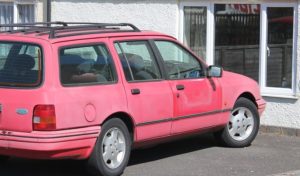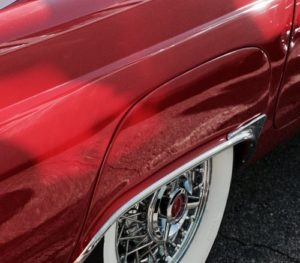Dull or oxidized paint can happen in several different ways. More often than not, it comes from neglect or improper care of the vehicle. Think of the paint on your vehicles like the skin on your body. The more your skin is exposed to the elements, the more it will breakdown and crack due to weather and aging. In some cases, your car’s paint is damaged beyond repair, so off to the body shop you go.
How paint oxidizes
Oxidation occurs from heat, oxygen and the contaminants on the paint of the vehicle. When heat and air combine on the surface of your car, the molecular structure breaks down and the paint stops looking vibrant. This process can be accelerated by sunlight and many other things that get on the vehicle causing chemical imbalances. You can’t stop oxidation from happening to your paint, but you can slow it down if you know what you are doing!
Wax
Wax can be great for adding a protective coating but wax will not last long if the vehicle remains in direct sunlight as the wax is susceptible to melting off. Last week we went over some methods that are even better in offering more long term protection like sealants. Sealant, which can give approximately 4-6 months of protection, bonds to form complete protection. If the paint is looking dull, you may be able to get it looking vibrant again with a two-step paint correction.

Spreading fast
Once oxidation begins, it grows rather quickly. In most situations, it can be removed either with a cutting polish or compound. In older more neglected vehicles, wet sand may be needed. At the end of the day, it is best to get your vehicle protected multiple times per year. OUTSHINE THE REST. Protect, don’t neglect.


